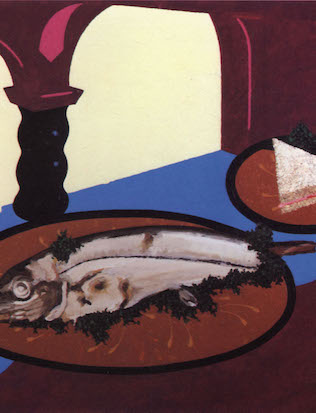Howard Hodgkin and Patrick Caulfield Remembered, by Andrew Graham-Dixon.
I first met Howard Hodgkin in the mid-1980s, when I was a journalist working on a feature about how artists frame their pictures. Howard was well known for incorporating the frame into his work, painting on it so that picture and frame become one, and I was curious to know why he did it. I still remember his explanation, delivered in a tone that mixed vehemence and lugubriousness. He felt that since his pictures were such fragile things, being essentially depictions of his own memories and emotions, they needed as much protection as possible against the outside world; so the painted frame was a kind of double buffer between them and whatever environment they might have to face in the future.
Howard’s home itself, it seemed to me, was another kind of buffer, between the artist and the abrasive city – London – in which he lived. From the outside it was just one of many Georgian townhouses in Bloomsbury. Inside, it was both a lair and a cave of wonders. The walls were painted in eau de nil and decorated with Iznhik tiles and ancient fragments of Persian carpet. At the back, two palm trees framed the entrance to a former paint warehouse which Howard had somehow managed to acquire along with the house. In this cavernous cubiform space, painted white and toplit, he worked on his pictures. He showed me some of them and on the way out, I think it was in his hall or his kitchen, I noticed a small picture by Patrick Caulfield: a still life in every sense, very still and full of life. I think grapes formed a part of it. Howard told me that he loved Patrick’s work. He paused for...


